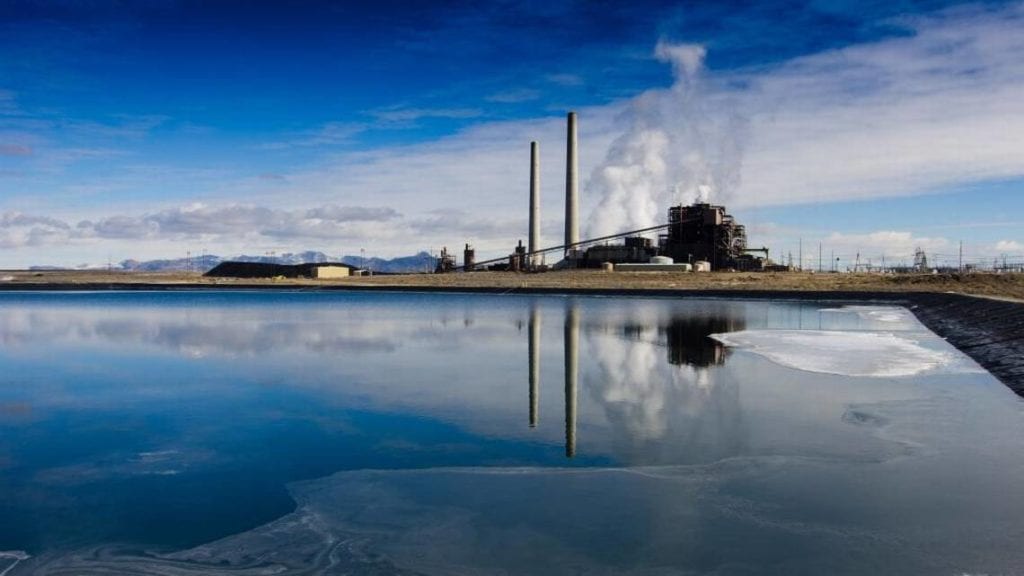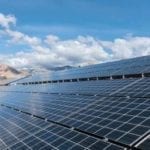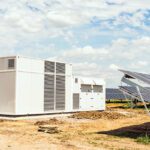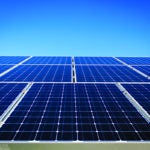NV Energy plans to retire a 254-MW coal-fired unit in a power-constrained region of Nevada at the end of 2021, four years ahead of schedule. The company will instead purchase 1,001 MW from new solar photovoltaic projects equipped with 100 MW of long-term battery storage, effectively doubling its total renewable generation from 14% in 2017 to 32% by 2023.
The plans are part of the company’s 2019–2035 triennial integrated resource plan (IRP) approved by the Public Utilities Commission (PUC) of Nevada on Dec. 21. As part of the IRP, NV Energy evaluated four alternative supply plans based on short-term wholesale power purchases over the next 20 years.
According to NV Energy President Doug Cannon, the approved supply plan, also known as the “Low Carbon Case,” moves the company closer to “a promise to our customers that we would double our renewable energy by 2023.” The company has made a long-term commitment to serve customers with 100% renewable energy, he noted.
A Planned Renewables Boost
As part of its IRP, which NV Energy anticipates will “reduce costs over the next 30 years when compared to relying on wholesale power markets,” the company will buy power through power purchase agreements (PPAs) from six new renewable power projects through the end of 2021. These projects, worth a combined direct investment of $2 billion in the state’s economy, “represent the largest renewable energy investment in Nevada’s history, will also bring great economic benefits to our state,” Cannon said.
Three of these projects will be located in a constrained portion of the northern Nevada grid and three in southern Nevada. Some projects are notable for their remarkably low power prices.
Battle Mountain Solar Project. The 101-MW solar PV project being developed by Cypress Creek Renewables includes 25 MW of battery energy storage for a four-hour period. NV Energy noted the battery capacity at the plant “will be the nation’s largest DC-coupled combined solar and battery storage system.”
Dodge Flat Solar Energy Center. The 200-MW solar PV project east of Reno is being developed by NextEra Energy Resources. That project will integrate 50 MW of four-hour-duration battery storage.
Fish Springs Ranch Solar Energy Center. The 100-MW solar PV project north of Reno, also being developed by NextEra Energy Resources, will integrate 25 MW of four-hour-duration battery storage.
Eagle Shadow Mountain Solar Farm. The 300-MW solar PV project north of Las Vegas on land owned by the Moapa Band of Paiutes is being developed by 8minuteenergy Renewables. NV noted: “The Eagle Shadow Mountain Solar Farm is unique because it is currently the lowest-priced solar project in the nation.” The project includes a flat $23.76/MWh rate throughout its 25-year PPA.
Copper Mountain Solar 5. The 250-MW solar PV project in Eldorado Valley, just south of Boulder City, is being developed by CED Southwest Holdings, Inc., a subsidiary of Consolidated Edison.
Techren Solar V. The 50-MW solar PV project in Eldorado Valley is being developed by Techren Solar LLC and will be adjacent to Techren Solar I, II, III and IV, which currently are in the construction stage. When completed, the full Techren project will have 400 MW.
At least four of the projects will require network upgrades, which the PUC approved on Dec. 21: Dodge Flat, at a cost of $13 million; Fish Spring, $2.38 million; Eagle Shadow Mountain, $550,000; and Copper Mountain, $7.4 million.
Closure of a Coal Unit in a Constrained Environment
Under NV Energy’s preferred “Low Carbon Case,” the company will shutter the coal-fired North Valmy Unit 1—a unit it acknowledges is “key to reliability within the constrained northern Nevada transmission system”—by December 2021.
NV Energy jointly owns the two-unit 522-MW North Valmy Generating Station near Valmy, Nevada, with Idaho Power, but it operates the plant’s two units. Unit 1’s retirement will leave the 268-MW North Valmy Unit 2 as Nevada’s only remaining coal-fired unit.

The measure to accelerate the unit’s retirement is a reversal of a 2013 PUC order to delay Valmy 1’s retirement from 2021 to 2025. The Dec. 21 order notes that the Idaho Public Utilities Commission ordered Idaho Power to stop burning coal by December 2019 for Valmy 1 and by Dec. 31, 2025 for Valmy 2.
However, in its proposal, NV Energy noted it could not meet the 2019 deadline for Valmy 1. It also noted the unit’s early retirement will rely on six conditions. These require that the three PV projects and associated projects will achieve commercial operation by June 2022, giving NV Energy enough capacity to serve customer load. NV Energy must also “have sufficient access to economic capacity and energy in western markets to mitigate cost pressure and alleviate a reduction in flexibility associated with not having power available from Valmy 1,” the PUC’s order noted. The unit’s early retirement may also be re-evaluated if transmission area load exceeds 2,800 MW.
The conditions are necessary, as the PUC’s order noted, because “the planning environment in which it operates is becoming increasingly fractured and uncertain due to things like not knowing where new or existing distribution-only service customers are acquiring their network resources or how they will be delivered to the distribution system.”
Valmy 1, which went into service in 1981, uses a Babcock and Wilcox Boiler and a Westinghouse turbine/generator. Unit 2, which went into service in 1985, uses a Foster Wheeler Boiler and a GE turbine/generator. The plant is also equipped with state-of-the-art pollution control technologies, including a zero-liquid discharge facility and fabric filters that remove 99.9% of particulate emission. “Additionally, a dry sorbent injection system is used on Unit 1 to reduce acid gas emissions, and flue-gas scrubber technology is utilized on Unit 2 for the reduction of sulfur dioxide emissions,” NV Energy said.
—Sonal Patel is a POWER associate editor (@sonalcpatel, @POWERmagazine)










